Keynote speakers
 |
Dr. Michel Fillon: Institut PPrime Poitiers University France
"Experiments & validation in hydrodynamic journal and thrust bearings"
For permanent and transient regimes and under various operating conditions, the measurement of bearing characteristics are required for on one hand, a better understanding of the bearing behavior and for another hand, the validation of the theoretical and numerical modeling. Examples of experimental data will be presented and discussed on hydrodynamic pressure, solid and film/solid interface temperatures, frictional torque, film thickness or eccentricity, oil flow rate....
|
 |
Prof. Benyebka Bou-Saïd: INSA Lyon France
“Impact of using foil bearing on rotor dynamics: a numerical analysis”
The last decades experienced a growing enhancement of aeronautical turbomachinery using air-lubricated bearings. Numerical procedures are presented which analyze the dynamic behavior of simple flexible rotors considering the nonlinear (time-transient) characteristics of aerodynamic bearings. The use of this tool on a simple example will highlight the interest of nonlinear numerical simulations.
|
 |
Prof Francesco Massi: La Sapiensa University Roma Italy
“Contact and System Dynamics, from friction-induced vibration to vibration-induced contact”
The contact between surfaces in relative motion is a living and evolving entity, subjected to transient boundary conditions and effected both by the macroscopic dynamic response of the system and the local dynamics at the interface. The transient contact solicitations give origins to more or less fast transient accommodation mechanisms. Example of friction-induced vibration issues (brake squeal and groan, prosthesis squeaking, tactile perception) will be discussed together with the role of fast interface dynamics on the overall frictional and wear response of the interfaces.
|
 |
Dr Mathieu Renouf: Montpellier University France
"Multi-physical and multi-scale modeling of tribological interface"
The interface between two contacting bodies plays an important role in load transfer but also in the accommodation of deformations and shear. In many applications, the observation of this interface remains impossible, requiring the use of numerical simulations. A local approach based on a discrete element method is presented as well as its developments allowing to face the multi-scale and multi-physical aspects present during the dynamic evolution of a contact.
|
 |
Dr Aurélien Saulot: INSA Lyon France
"Dry tribology for space application"
"Space mechanisms has to maintain their tribological efficiency in a wide range of environment, from ultra-clean rooms during both assembly step and qualification tests to ultra-high vacuum in deep space, and also during the storage step (up to many years) under quasi-neutral environments. As for a consequence, solid lubricants used to protect the contact surfaces and maintain the efficiency of such mechanisms have to be the lower possible sensitive to environmental evolutions. Tribological phenomena involved in such evolution has to be carefully studies to prevent a disastrous failure in space."
|
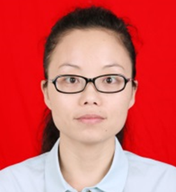 |
Mingjin Fan: Baoji University of Arts and Sciences
“Toward Green Lubrication: Development of High Performance and Environmentally-friendly Lubricating Oil”
Mineral oil-based lubricants cause severe environmental problems due to their disposal to land and water after use. Thus, synthetic lubricating oil has come out as an alternate choice and been widely applied as engine oil, two-stroke cycle oil, compressor oil, hydraulic fluid, aviation oil and so on.With the rapid development of modern industry, it demands synthetic lubricating oil should have the feature of high performance and environment-friendly. Examples of developing this type of synthetic ester oilswill be presented,which were proved to possess superior tribological and environmental properties relative to those of all the existing synthetic esters.
|
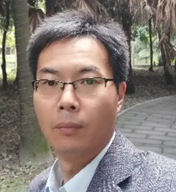 |
Xiaolong Wang: Lanzhou Institute of Chemical Physics, Chinese Academy of Sciences
“Bio-inspired surfaces with frictional anisotropy"
Anisotropic friction is widespread in biological surfaces/interfaces that are covered with micro- and nanostructures oriented to supporting layer, which is crucially responsible for the purpose of locomotion or transporting items in nature and thus attracting extensive attention. Taking the advantages of the emerging 3D printing on flexible design and freeform fabrication, bio-inspired surfaces that mimic wheat awn and Filefish skin were prepared, and the frictional anisotropy that can be controlled with the structure and the supporting layer and the proof-of-concept demonstrations for unidirectional driving and transportation will be discussed.
|
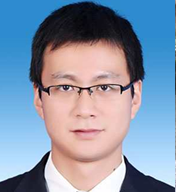 |
Liguo Qin: Xi'an Jiaotong University
“Functional surfaces for biotribology and Drag reduction”
Abundant examples of structures, materials and surfaces are found in nature, which drive us to understand basic principles, such as smartness, microminiaturization, hierarchical assembly and adaptability. Investigating these fundamental principles is able to provide glamorous improvements for technical applications. We study how to control the tribological performance of engineering surface and how the surface interacts with lubricants. The aim is to solve problems and generate greater understanding relevant to a range of applications including Bio-tribology, Drag reduction & Multifunctional surface construction.
|
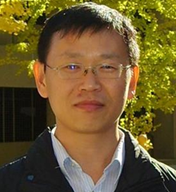 |
Shaoxian Bai: College of Mechanical Engineering, Zhejiang University of Technology
“Lubrication mechanism and mass transfer law of gas-liquid heterogeneous seal”
1. Engine seal technology: mainly engaged in engine seal theory, new seal structure design, seal interface failure analysis, life prediction and reliability assessment, seal characteristics detection and test technology research.
2. Fluid thermohydrodynamic fluid lubrication theory: mainly engaged in the study of fluid thermodynamic lubrication theory, numerical calculation method of fluid lubrication, interfacial effect of fluid lubrication, and surface anti-friction and wear-resisting technology.
|
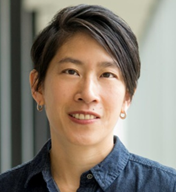 |
Teri W Odom: Northwestern University
“Conformable and Deformable Thin Materials”
This talk will describe a memory-based, sequential wrinkling process that can transform flat thermoplastic sheets into multi-scale, three-dimensional hierarchical textures. Multiple cycles of plasma-mediated polymer skin growth followed by directional strain relief of the substrate can produce hierarchical architectures with independent control over wrinkle wavelength and wrinkle orientation. We will discuss how this bottom-up sequential wrinkling process with soft skin layers can produce conformable deformable two-dimensional electronic materials with new structural properties for diverse applications.
|
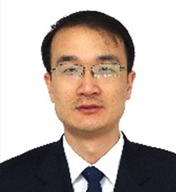 |
Feng Zhou: Lanzhou Institute of Chemical Physics, Chinese Academy of Sciences
“Control over surface wet-adhesive-lubricious performance”
Wetting, adhesion and friction are the three basic concepts that characterize interface interactions. Infiltration and hydration are the key factors that determine the low friction of living tissue. Therefore, surface hydration is an effective means to reduce the friction at the solid-solid interface. Based on this concept, we have developed a series of methods and techniques to prepare a series of functional biomimetic hydrophilic lubricants, which achieve the uniformity of low friction, high load-bearing and anti-wear properties of sliding interfaces, and solve traditional polymer brush/soft material.
|
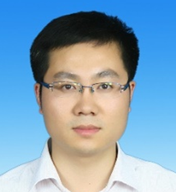 |
Daoai Wang: Lanzhou Institute of Chemical Physics, Chinese Academy of Sciences
“Triboelectrification: Mechanism, Influence factros and Applications”
Static electricity generated by triboelectrification, which has proven useful in many areas such as xerography, electrostatic air cleaning and electrostatic painting, on the other hand, can generate electric discharge, which is a hidden danger for petroleum transport and industrial production and may result in heavy casualties and economic losses. It's very important to reveal the mechanism and influence factors of triboelectric charge generation and realize effective control of triboelectric charge quantity at the interface. Here we introducesome recent work in the studies of interface control and utilization of triboelectrification in our lab. We studied the influence of surface structure and surface composition on the triboelectrification charge, and other influence factors such as friction force, temperature, humidity, and so on, were also studied, which will help us to design the friction materials and antistatic materials.
|
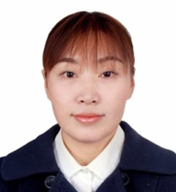 |
Jing Wang: Donghua University, China
“Performance of grease lubrication in reciprocating motion”
90% of rolling element bearings, some gears, and chain drives are lubricated with grease. The thickener fiber existing in the grease forms a complex network structure in order to store oil, offering grease a superior advantage over oil lubrication. Because of the complex structure of grease, the influence of grease thickener fiber on lubrication has become an important issue in recent years. Experimental results will be presented to show the grease distributions in a steady‐state condition and reciprocating condition at low-middle speeds over long working periods for different slide-roll ratios.
|
 |
Junhong Jia: Shanxi University of Science & Technology,
“Tribological properties of plasma sprayed NiAl compositecoatings with addition of nanostructuredTiO2-Bi2O3binary oxides”
Numerous oxides have been researched and used as high temperature lubricants for their structural and chemical stability, in which mixed oxide systems, such as NiO–TiO2, AgO–MoO3, CoO–MoO3, etc, exhibit exceptional and promising advantage during high temperature test. In the TiO2-Bi2O3 binary system, the ionic potentialdifferenceis high and bismuth oxide possess lower interaction parameter than other oxides according to polarizability approach, implying the theoretically excellent lubricating property. In present work, the pray-dried nanostructured TiO2/Bi2O3 feedstock powders were incorporated into plasma spray NiAl composite coatings. The tribological properties of the composite coatingsfrom RT to 800oC were investigated.The results showthat the nanostructured TiO2/Bi2O3 phases performed the typical bimodal microstructure resulting in a significant enhancement of mechanical and tribological properties of thecomposite coatings.
|
|

